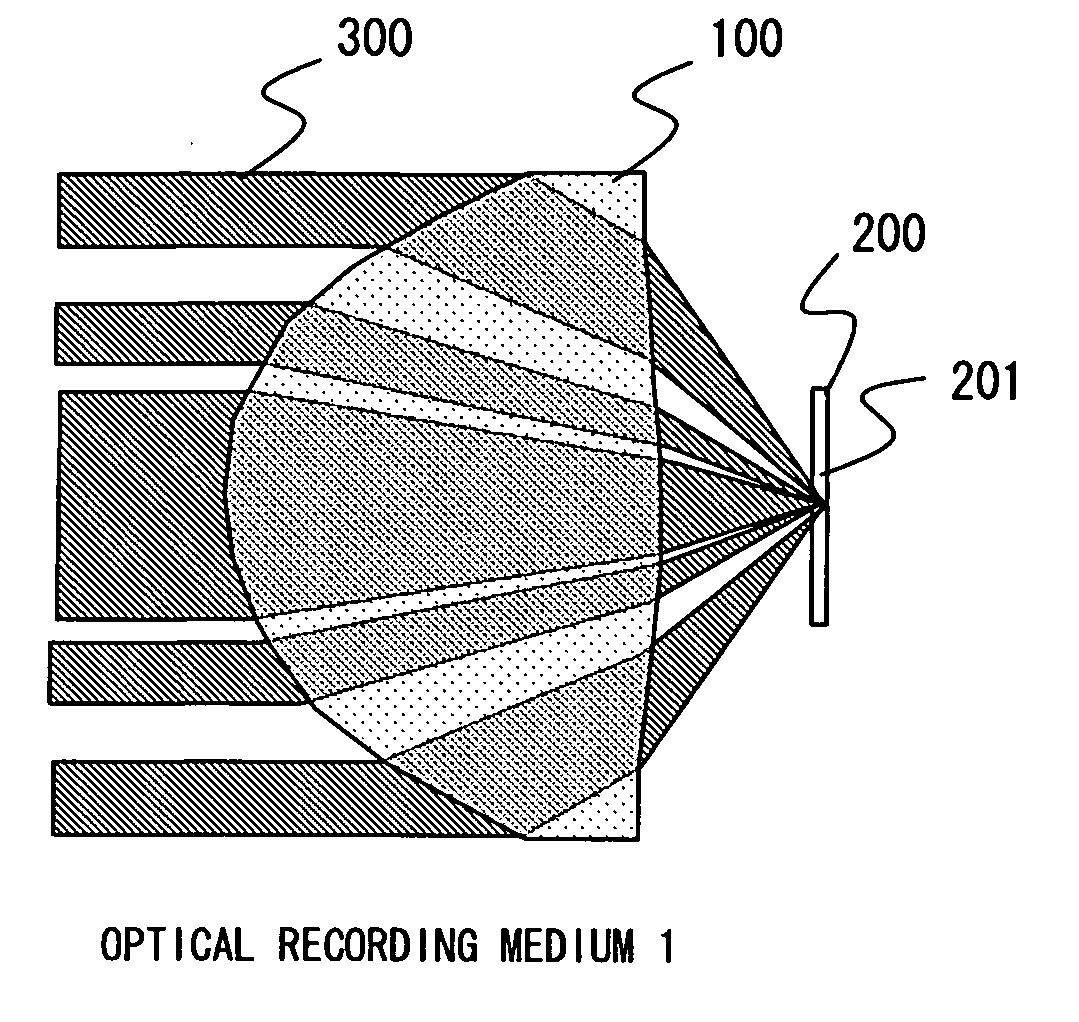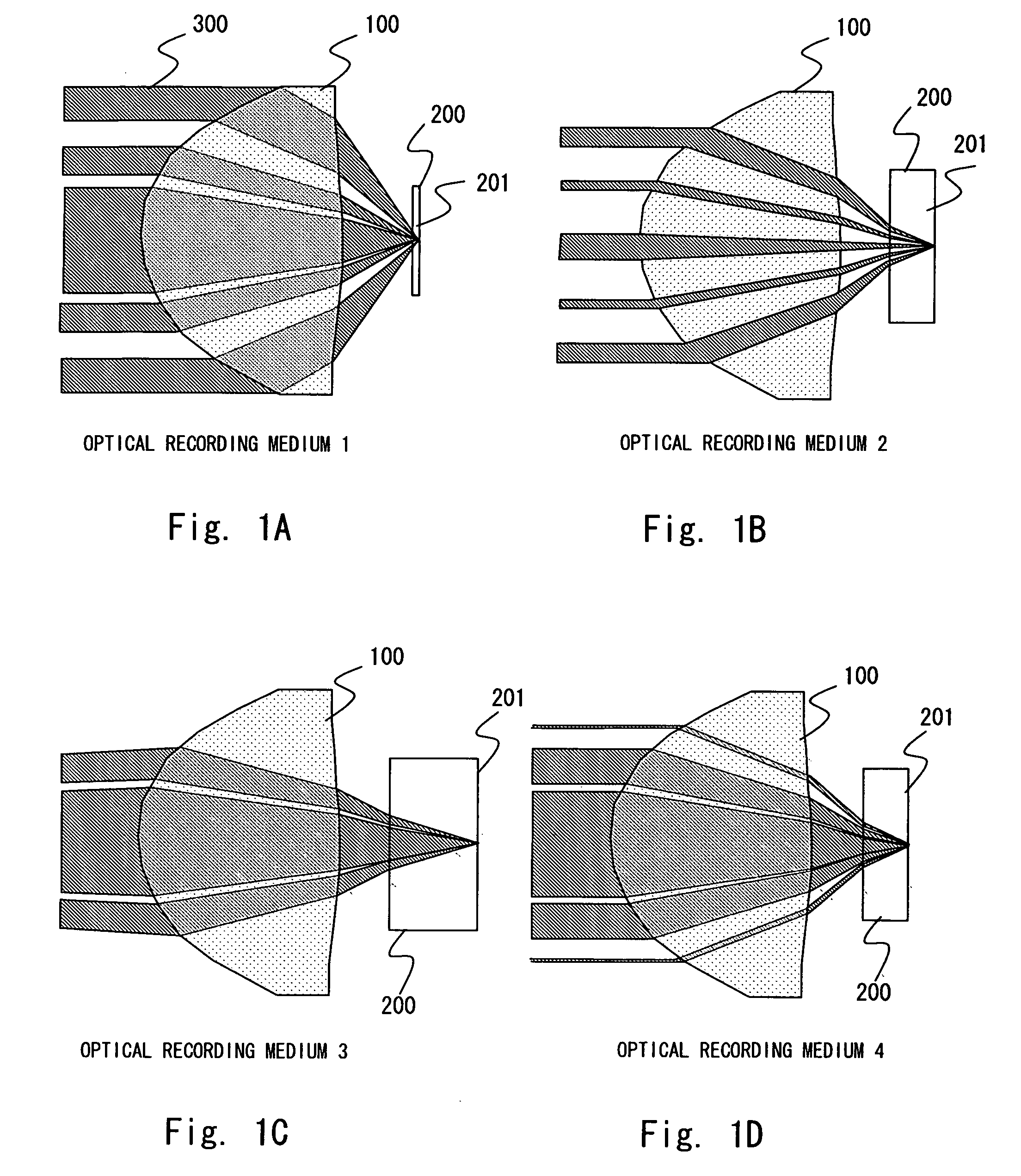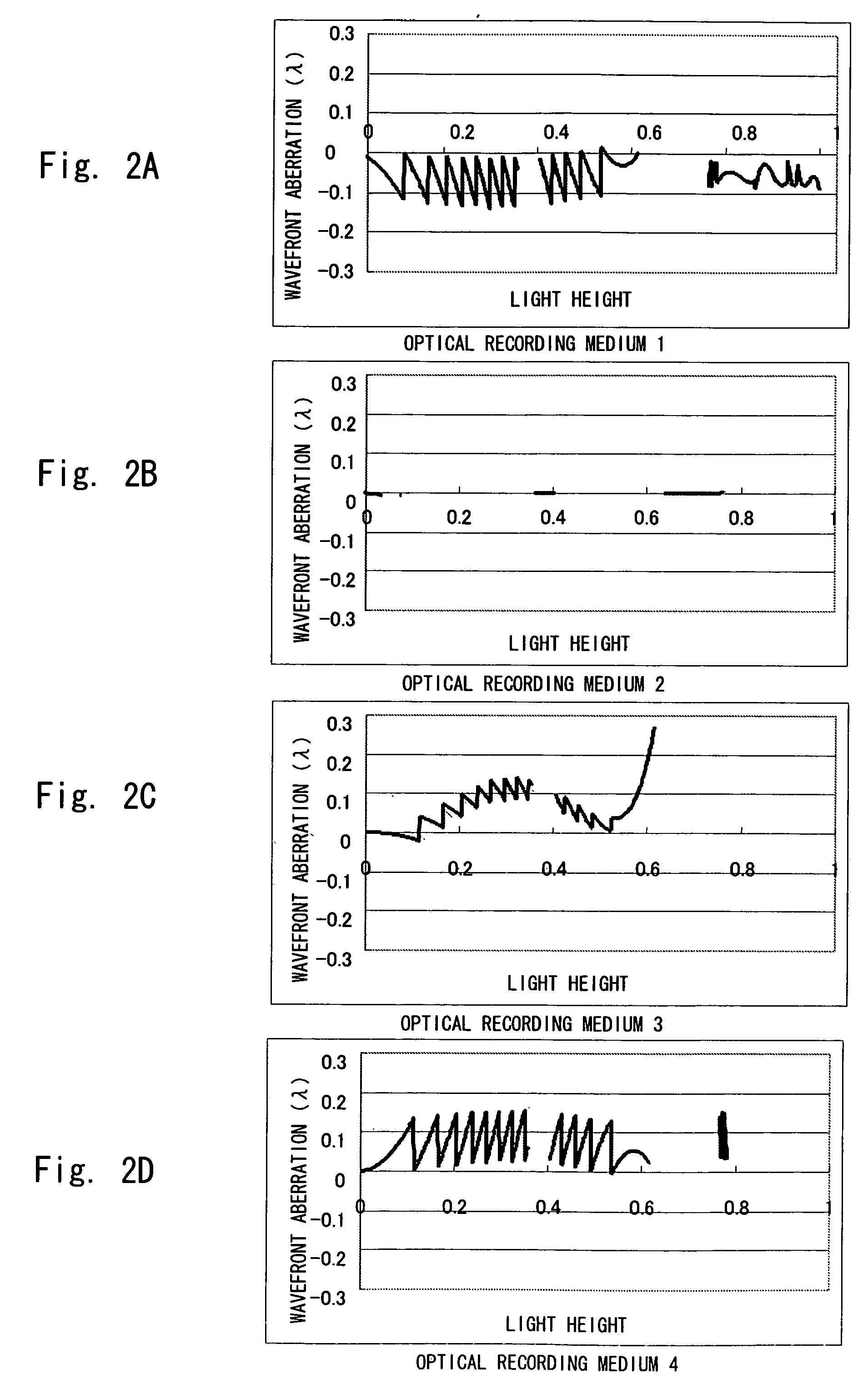Objective lens optical system
- Summary
- Abstract
- Description
- Claims
- Application Information
AI Technical Summary
Benefits of technology
Problems solved by technology
Method used
Image
Examples
embodiment 1
[0108] The objective lens optical system according to the present Embodiment 1 is composed of one lens. With respect to this objective lens, an effective aperture of an incident light beam into each of the optical recording medium and a refractive index of lens material used are shown in FIG. 12.
[0109]FIG. 13 shows areas of light height for focusing light on each of the optical recording medium. The number for each area will be hereinafter called a “medium area number.” For example, a medium area number 1 is an area specified by a light height of 0 to 0.232 mm, and a medium area number 2 is an area specified by a light height of 0.232 to 0.725 mm. The light height is a distance from an optical axis which is perpendicular to an optical axis on the iris surface.
[0110] According to Embodiment 1, as shown in FIG. 13, focusing light on each of the optical recording medium shown in FIG. 13 can be performed in the area specified by the medium area number. Concretely, the area specified b...
embodiment 2
[0124] The objective lens optical system according to the present Embodiment 2 has the same basic structure as that of Embodiment 1, in which light is focused on the four types of the optical recording medium shown in FIG. 11, and a lens material is used which has the effective apertures and the refractive indexes of an incident light beam to be input into each of the optical recording medium shown in FIG. 12. Hereafter, description is omitted for the same contents as those of Embodiment 1.
[0125]FIG. 18 shows areas of light height for focusing light on each of the optical recording medium in the objective lens optical system according to Embodiment 2. FIGS. 19 and 20 show lens data and surface shape data of the lens of the objective lens optical system according to Embodiment 2. FIG. 3 shows wavefront aberrations of the objective lens optical system according to Embodiment 2, and FIG. 22 shows an RMS wavefront aberration value concerning the objective lens optical system according ...
embodiment 3
[0129] According to Embodiment 3 described below, the objective lens optical system of the present Embodiment has the same basic structure as that of Embodiment 1, in which light is focused on the four types of the optical recording medium by using the objective lens optical system shown in FIGS. 23-27. FIG. 4 shows features of the objective lens optical system according to Embodiment 3, and FIG. 28 shows RMS wavefront aberration values. Hereafter, the description is omitted for the same contents as those of Embodiment 1.
[0130] In the objective lens optical system according to Embodiment 3, an optical path length difference between areas is arranged as follows: That is, with respect to the areas specified by the surface area numbers 2, 4, 6, 12, and 14, an optical path length difference is set to be approximately −0.06±0.06λ, that is −0.12λ2 to 0λ2 for the optical recording medium 2, and an optical path length difference is set to be approximately +0.06±0.06λ, that is 0λ4 to 0.12λ4...
PUM
 Login to View More
Login to View More Abstract
Description
Claims
Application Information
 Login to View More
Login to View More - R&D
- Intellectual Property
- Life Sciences
- Materials
- Tech Scout
- Unparalleled Data Quality
- Higher Quality Content
- 60% Fewer Hallucinations
Browse by: Latest US Patents, China's latest patents, Technical Efficacy Thesaurus, Application Domain, Technology Topic, Popular Technical Reports.
© 2025 PatSnap. All rights reserved.Legal|Privacy policy|Modern Slavery Act Transparency Statement|Sitemap|About US| Contact US: help@patsnap.com



